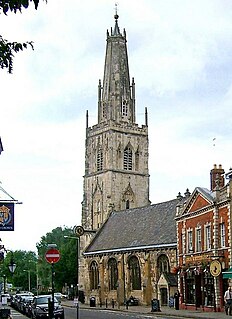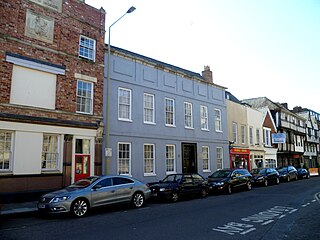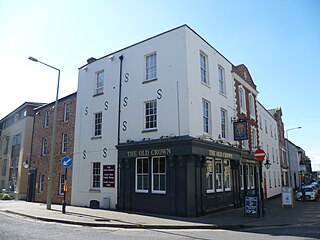 W
WThe Westgate area of Gloucester is centred on Westgate Street, one of the four main streets of Gloucester and one of the oldest parts of the city. The population of the Westgate ward in Gloucester was 6,687 at the time of the 2011 Census.
 W
W66 Westgate Street is a grade II* listed building in Gloucester, UK. It has been listed by Historic England under the Planning Act 1990.
 W
WAlney Island is an island in the River Severn near Gloucester. The Severn splits into two channels at Upper Parting, and merges again at Lower Parting to the south. The island is a strip of land in between the two channels, about 2.1 mi or 3.5 km long and 0.74 mi or 1.2 km wide at its widest (east-to-west). It is a local Nature Reserve.
 W
WThe Dick Whittington Tavern, currently named Dick Whittington's, is a public house at 100 Westgate Street, Gloucester, built in the 13th century and known as Saint Nicholas House, possibly for the family of Richard Whittington, Lord Mayor of London. The building is grade I listed with Historic England.
 W
WThe Fleece Hotel, Westgate Street, Gloucester is a timber framed building dating from the 15th century, which incorporated a 12th century stone undercroft. The building is part grade I and part grade II listed with Historic England.
 W
WThe Fountain Inn is a grade II listed public house at 53 Westgate Street, Gloucester, England. It is mentioned in an Abbey Rental document of 1455. Some of the building is from the late 16th century but it was mostly rebuilt in the late 17th century, altered in the 18th century, and remodelled around 1900.
 W
WThe Gloucester Old Bank was a British bank that operated between 1716 and 1838. It was founded in 1716 by James Wood. The bank was said to have been the oldest private bank in Britain, having survived the financial consequences of the Napoleonic Wars when many other banks went out of business. The claim was wrong as both C. Hoare & Co and Child & Co. were founded earlier, it was, however, one of the oldest banks in Britain in the nineteenth century.
 W
WGloucester Shire Hall is a municipal building in Westgate Street, Gloucester. The shire hall, which is the main office and the meeting place of Gloucestershire County Council, is a grade II listed building.
 W
WSt Nicholas Church is a historic church in Westgate Street in the city of Gloucester, England, under the care of The Churches Conservation Trust. It is recorded in the National Heritage List for England as a designated Grade I listed building. Its truncated spire is a landmark in the city centre.
 W
WHyatt House or Hyett House is a grade II listed building at 91 Westgate Street, Gloucester. The building is of a timber frame with stone and was probably constructed in the 16th century. According to a plaque on the building, an earlier dwelling stood on the site at least as early as 1455. The current façade was probably constructed by Nicholas Hyett (1709-1777), a local lawyer and justice of the peace. In 1988 the building was converted to flats by Avondown Housing Association and Gloucester City Council.
 W
WThe Lower George Hotel, now the Lower George Inn, is a grade II listed building at 121 Westgate Street, Gloucester.
 W
WThe Old Crown Inn is a grade II listed public house at 81 and 83 Westgate Street, Gloucester.
 W
WThe Sword is a public house at 45 Westgate Street, Gloucester, England, that is a grade II listed building with Historic England. It was formerly known as The Union and Molly's Bar.
 W
WThe Folk of Gloucester is a museum which is housed in two of the oldest buildings in the City of Gloucester, a Tudor merchant's house and a 17th-century town house. The museum, at 99–103 Westgate Street, is devoted to the social history of Gloucestershire.
 W
WJames (Jemmy) Wood was the owner of the Gloucester Old Bank who became nationally known as "The Gloucester Miser". His wealth of around £900,000 was stated at the time to have made him "the richest commoner in His Majesty's dominions".